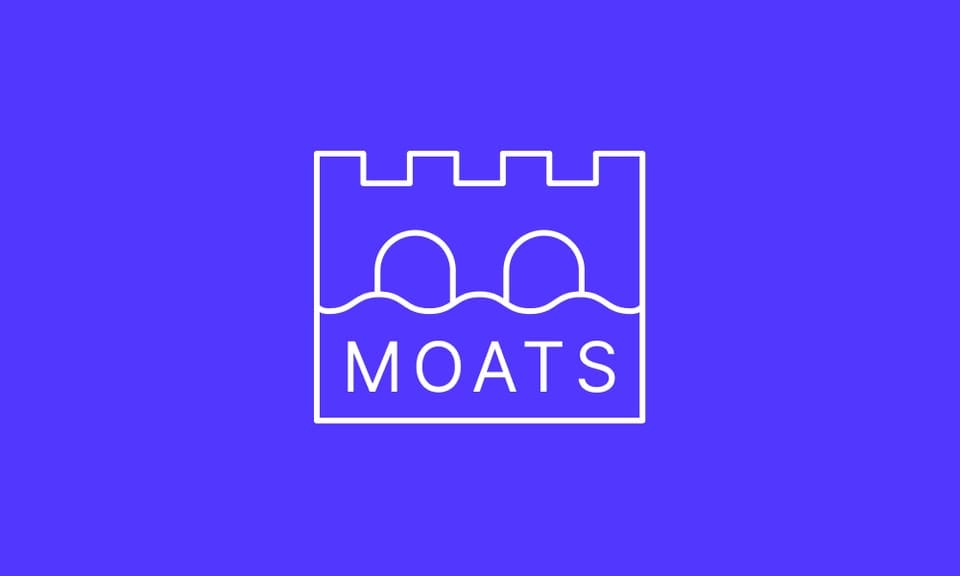Building Your Financial Moat
How to bullet proof your portfolio heading into 2025
Day 110 | $12,700
The market’s been a rollercoaster lately—interest rates bouncing around, a new president moving in, and tariff threats looming.
It’s been chaotic, to say the least. But when things get messy, it’s nice to know your investments have some built-in protection. Or, as Warren Buffett would say, you need a moat.
A moat is what keeps your portfolio safe when the market feels like it’s on fire. It’s the competitive advantage that protects a business from competitors trying to steal its lunch.
And in 2025, with all the noise out there, having companies with strong moats in your portfolio is more important than ever. Let’s dive into what moats are, why they work, and how they’re like having sharks and alligators guarding your castle.
What Exactly Is a Moat?
Picture this: You’re living in a medieval castle surrounded by a deep moat filled with sharks (or maybe alligators—your choice). While rival kingdoms battle it out on the other side of the water, you’re chilling inside your fortress, knowing you’re protected.
In the business world, moats are like those sharks—they keep competitors at bay and protect profits. Companies with strong moats don’t just survive; they thrive because they’ve built something that’s hard for others to copy or compete with.
One of my favorite research firms, Morningstar, has identified five types of economic moats that businesses can have. Let’s break them down and look at some real-life examples (from my portfolio) to see them in action.
The 5 Types of Moats
Network Effect
The more people use a product or service, the more valuable it becomes for everyone else using it.
Think of Facebook (Meta). You’re not joining because it’s cool anymore—you’re joining because everyone you know is already there! That makes it super hard for competitors to start their own social network from scratch.
Intangible Assets
These are things like patents, brands, or licenses that give companies an edge.
Example: Nike’s swoosh logo isn’t just a logo—it’s a symbol of quality and style that lets them charge $150 for sneakers.
Cost Advantage
Some companies can make or sell things cheaper than anyone else because of their scale or efficiency.
Example: Walmart dominates retail because its supply chain is so efficient that it can offer low prices and still make money. Competitors just can’t keep up.
Switching Costs
This is when it’s too much of a hassle (or too expensive) for customers to switch to another company.
Example: Microsoft Office—once a business starts using Excel or Word, switching to something else would mean retraining employees and redoing years of work files. It’s just not worth it! (Trust me, my company lives and breathes Microsoft!)
Efficient Scale
This happens when there’s only room for one or two players in a market because it doesn’t make sense (usually from a cost perspective) for anyone else to join in.
Example: Railroads—there’s only so much land for tracks, and building new ones costs billions of dollars. Companies like Union Pacific or Norfolk Southern dominate because no one else can afford to compete at their level.
Moats in Action: My Portfolio Picks
...and why I think they’ll stand tall even when the market gets rough:
ASML
They make the machines that build advanced computer chips for companies like Nvidia and Intel.
Moats: Patents (intangible assets), insanely expensive machines (switching costs), and basically no competition in their niche (efficient scale).
Alphabet (Google)
Google isn’t just search—it’s also YouTube, Android, and Google Cloud. Their products are so interconnected that once you’re in their ecosystem, you’re probably not leaving anytime soon.
Moats: Network effects (everyone uses Google), advanced algorithms (intangible assets), and switching costs (good luck moving all your Gmail data somewhere else).
Intuit
They own TurboTax and QuickBooks—the go-to tools for taxes and small business accounting.
Moats: Deep integration into businesses (switching costs), strong brand recognition (intangible assets), and tons of users who make their products even better (network effects).
A Word of Caution about Moats
Now, just because a company has a moat doesn’t mean it’s invincible.
Markets change fast—just look at how AI tools like ChatGPT (And China's DeepSeek) are shaking up Google’s search dominance right now! That said, I think Google will hold its ground because they’ve been investing in AI for years and know how to adapt.
The key is to keep an eye on whether these companies are still innovating and staying ahead of the competition. A moat isn’t something you build once—it needs constant maintenance.
Also, don’t forget to check the numbers! Growing revenue, free cash flow, and earnings are signs that a company is putting its moat to good use.
Final Thoughts
Having companies with strong economic moats in your portfolio is like having an army of sharks protecting your investments from market chaos. They give you peace of mind knowing your money is working hard—even when everything else feels uncertain.
So as we head deeper into 2025, take some time to review your portfolio and make sure your “castle” is well-defended.
Keep walking!
Jeremy ✌️


